8 Highlights from my Visit to Patagonia, Chile: Hikes, Volcanos, and More

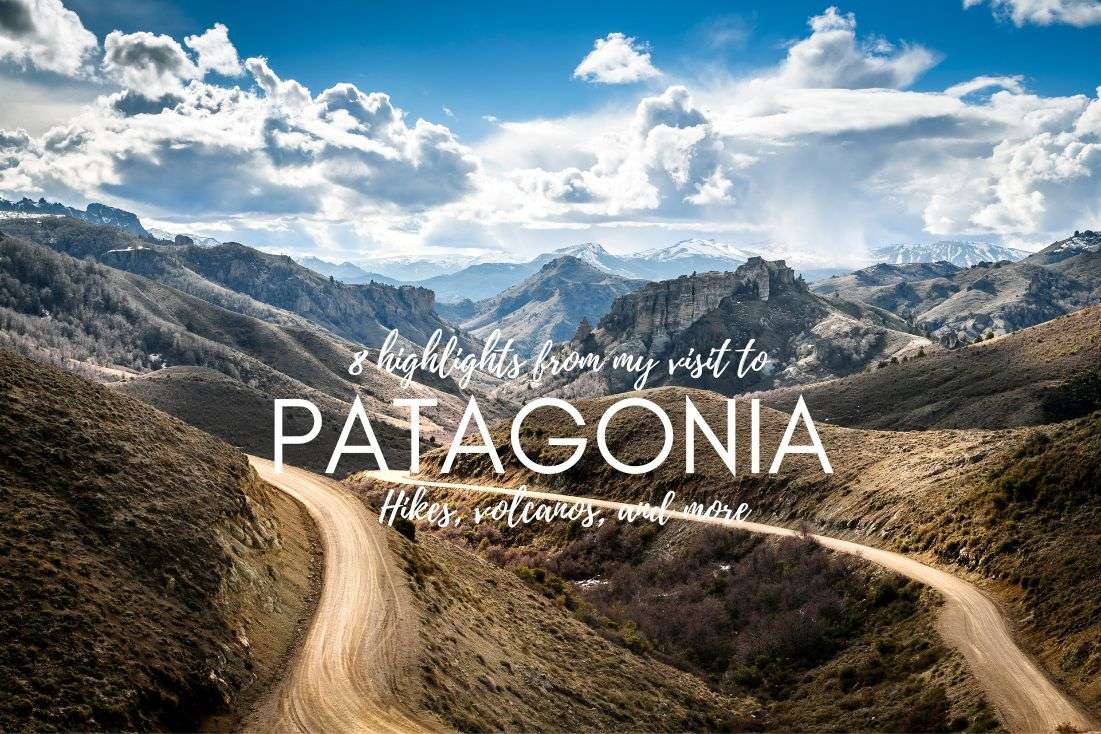
Patagonia is the Chilean “end of the world”. When we get to the Magellan’s Strait, we knew we’re only a few islands away from the Antarctic. Which are the highlights of Patagonia? Well, there are some of the most beautiful places I’ve ever been to… and intense experiences. Ready for the top 8? Here we go.
Don’t forget to book a hotel in advance! You can use our affiliate link, so we earn a low percentage from it to improve this blog. Also, you might find helpful my 10 Tips on Booking a Hotel Room Without Making Rookie Mistakes article.
You might also be interested in reading:
- 3 Weeks in Chile: The Ultimate Travel Itinerary
- All You Need to Know About Traveling to Chile: 15 Tips and Tricks
- All You Need to Know About Climbing Villarrica in 4 Steps
- 20 Best Day Hikes in Chile of Various Difficulties
8. Punta Arenas
Located on the Strait of Magellan, it’s the southernmost city of Chile (the southernmost city of South America is Argentinian Ushuaia). Punta Arenas was a heavily trafficked port before the opening of the Panama Canal, so it’s well-equipped. We used the city as a base for exploring Patagonia, as there’s also an airport.
What to visit in Punta Arenas? Here is a list:
7. Cueva del Milodon
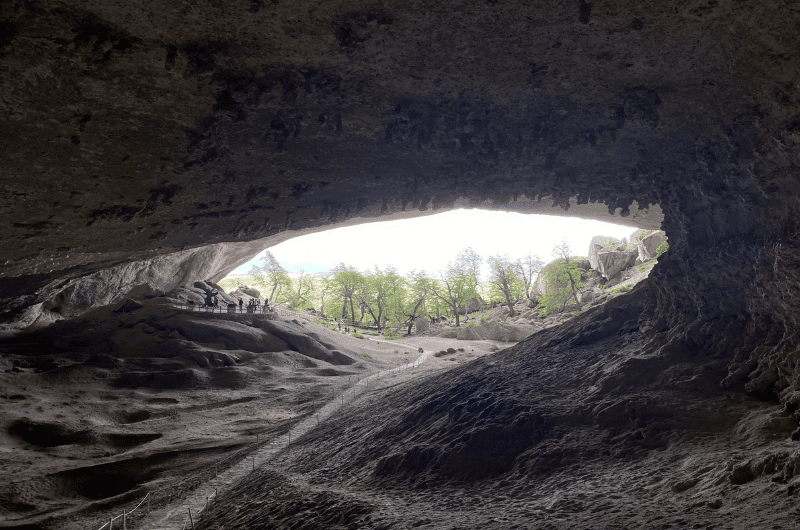
In 1895 a German biologist Hermann Eberhard discover the remnants of a prehistoric giant sloth in these caves. It was the best-preserved remains of Mylodon darwinii they found, hence the name of the cave. There were also other representatives of the giant fauna found in Mylodon Cave as you can see in the museum on site.
The complex comprises several caves and a rock formation called Silla del Diablo (the Devil’s Chair). I think it makes a good stop on the way from Puerta Natales to Torres del Paine. We visited the caves, the museum and took a walk along the flanks of Cerro Benitez. Two hours are more than enough for this visit.
Opening times:
- Open daily from 8 am to 6 pm.
Prices:
- Adult: 8.400 CLP (10 USD | 8.80 EUR)
- Children 12-17: 4.200 CLP (6 USD | 4.4 EUR)
- Children under 12: Free
Read also: 33 Mexico Travel Tips from Our Own Experience

Hotels in the area are not great. However, the Vinnhaus Hotel was okay (although quite expensive) and if I planned to return, I would choose it again. Main highlights are the tasty breakfasts, large rooms, and modern design
Prices start at USD 153 per night.
Just so you know, we really spend time choosing the best places to stay in, it’s not just a random selection. If you decide to use our link to book any of the hotels in the article (or even if you click away and book a different hotel), we get a small commission at no extra charge to you. Thank you!
6. Chiloé Island
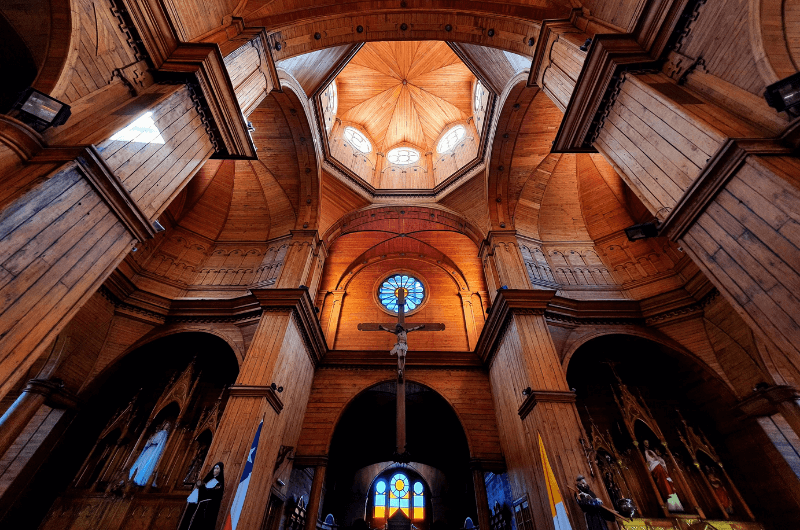
Isla Grande de Chiloé is the fifth-largest island of South America and one of the places I didn’t manage to get to, which I deeply regret. Anyhow, it’s one of the must-see places in northern Patagonia. The Chiloé culture is very distinct thanks to its remoteness. Make sure to visit the UNESCO pearls—16 wooden churches from the 17th century. In fact, there is around 70 of them, but these 16 stand out, as they represent the unique fusion of Jesuit and Mestizo cultural tradition. I’m sure the indigenous people very happily and willingly converted to Christianity and helped to build these churches (sarcasm detected).
Learn more about Chilean culture in All You Need To Know About Chile article.
Apart from churches, be sure to visit the National Park Chiloé or Park Tantauco. Tantauco is one of the few private parks in Chile, owned by a former president Sebastián Piñera. The park lies off the beaten track, which means you can enjoy more isolated natural experience and spy on the cute otters or indigenous pudú deer.
5. Tierra del Fuego
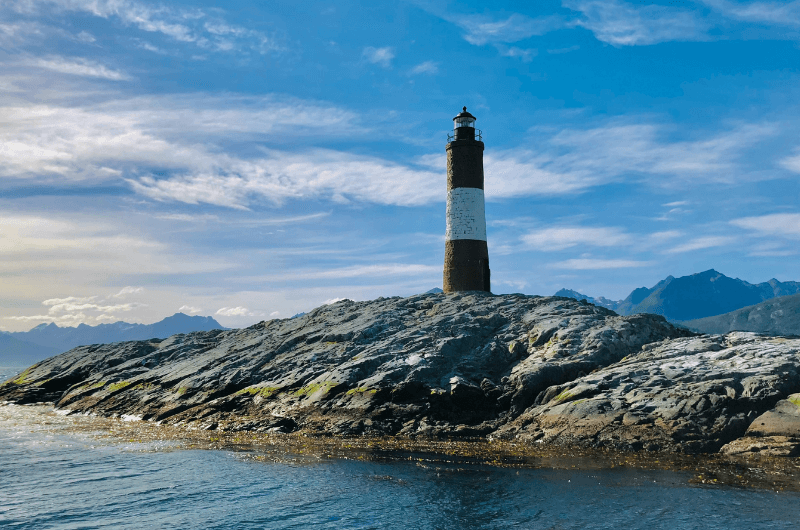
The ‘Land of Fire’ as the Magellan named it, refers to the whole island which is half Chilean and half Argentinian. We decided to leave this cold, rough region for our next visit, but you can easily get there for a daytrip by plane from Punta Arenas. You’ll land in Porvenir, a rustic village with a museum covering the whole history of this region. From indigenous people to European settlements. Other than that, the island is mainly uninhabited wilderness at the end of the world (the Antarctica is just a short ship-trip away from the island). The main hub of Tierra del Fuego is Ushuaia, which belongs to Argentina and is also the southernmost city in the world. So, hop on the plane and fly to the end of the world, literally.
Fun fact: It’s not called The Land of Fire because it’s hot (duh, it’s the same climate as Iceland). The story behind the name is actually pretty poetic, when Magellan passed through the strait and sailed around the island, he saw many fires along the coast and dubbed this island the Land of Fire.
Sad fact: In the 16th century, most of the explorers merely mapped the area. It was two hundred years later, when the first settlers came in. And, as usual, it didn’t end up good for the natives. As a result of what is called the Selk’nam genocide, the tribe has nearly vanished. The skulls and mummies of Selk’nam people are still displayed in the museum in Porvenir.
Our Tips for Patagonia: The best restaurants in Patagonia: Santolla | Quintal Enjoy Patagonia from the saddle: Ride World Best cocktails and drinks in Patagonia: Last Hope Distillery Pack like you’re going on vacation to Italy and Norway at the same time. North of Patagonia has a Mediterranean-like climate, but at the southernmost tip it’s freezing.
4. National Park Vicente Perez Rosales
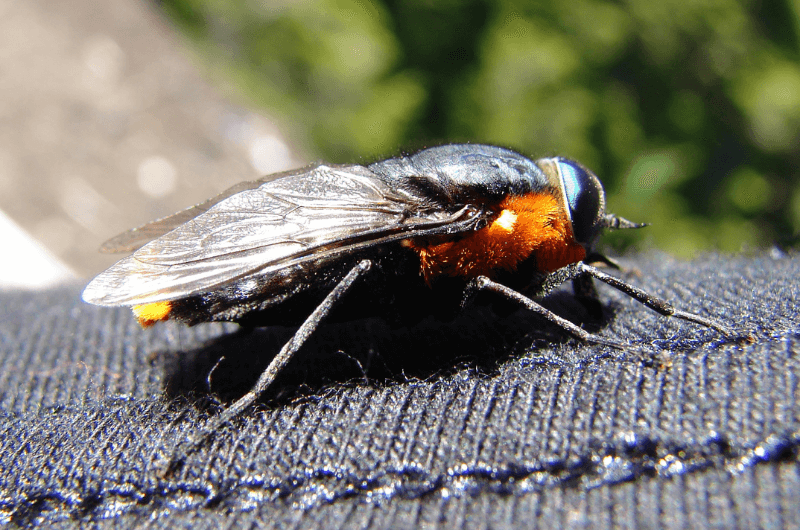
The Vicente Perez Rosales National Park stretches all the way to Argentina and it’s the first Chile’s national park, established in 1926.
WARNING:
I was really excited for this trip, as there’s a lot to see there, but I got a lesson there. It was not a big angry guy, nor a strenuous hike. It was fricking huge blood-sucking flies. They are part of Tabanidae family endemic to Chile and Argentina and they feed on blood of mammals, we can tell! In Spanish they call them el gran tirano, I think that’s fitting. On the bright side, they appear in this area only in January, I wish I’d known that before.
I’ve included Vicente Perez Rosales in the two versions of my itineraries for Chile—2-Week Itinerary and 3-Week Itinerary.
Osorno Volcano
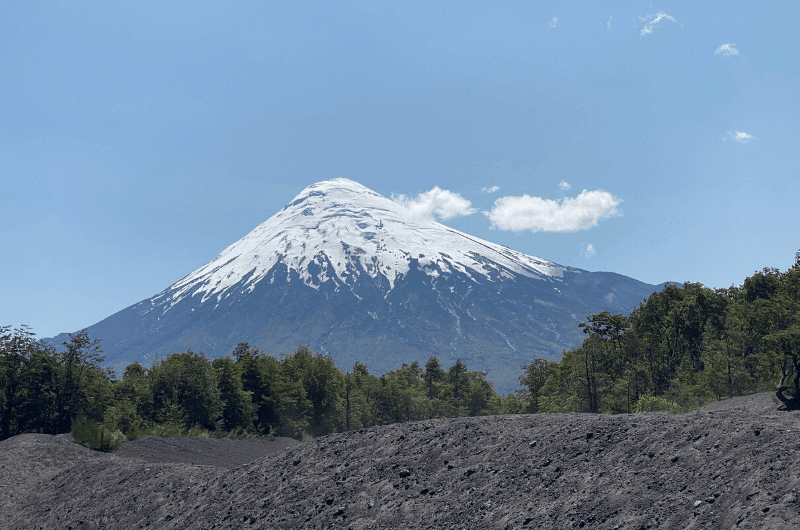
One of the prettiest volcanos in the world is also to be found in the Vicente Perez Rosales NP. As you can see in the picture below, it has a perfect conical shape with a glacier on the top, which makes it look a bit like the Paramount Pictures’ logo (which is by the way officially inspired by Ben Lomon peak in Utah) or Japanese mountain Fuji.
Practical info:
- If you wish to conquer Osorno, you'll need a local climbing agency to get you permission from CONAF (National Forest Corporation).
- The most popular and credible agency is Huella Andina.
- The ascent begins before dawn and includes a sleepover in a hut, so clear the night and a full day in your schedule.
- The price per person is 220 000 CLP (262 USD | 232 EUR).
Read also: The Big 3 of Altitude Sickness: AMS, HAPE, HACE
Lago Todos los Santos
Below the slopes of Osorno lies the Todos los Santos lake. It’s important mainly thanks to the transportation route to Argentina. But it also makes a beautiful setting for a hike with views of Osorno. I can recommend these two:
- Desolation Pass (hard, approximately 7 hours)
- Sendero Los Alerces (moderate, approximately 4.5 hours)
If it wasn’t for those damn flies, it would be a really nice hike. We came back to the hotel looking like we’ve just spent half a year on a desert island at the mercy of those bloodthirsty bastards. The route intersects after 4.5 km (2.8 mi), so you can combine the two.
Or you can try some of my list of 20 Best Day Hikes in Chile.
Petrohué Waterfalls
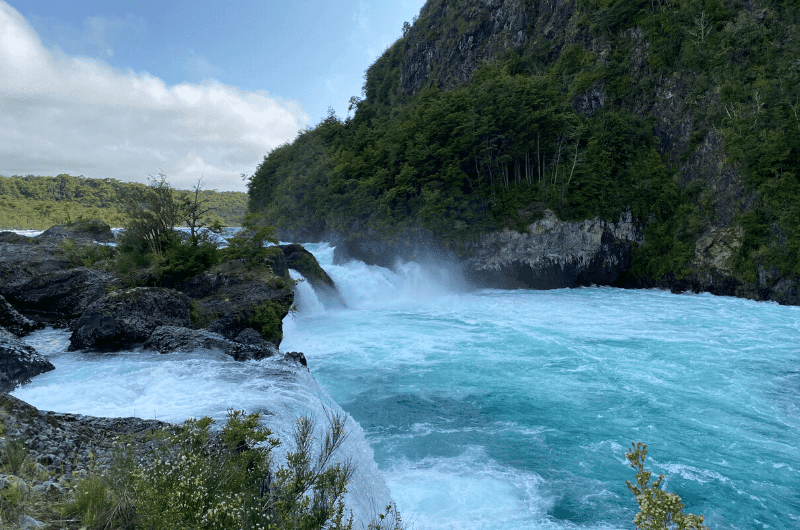
And one more surprise for me. Karin wished to visit the Petrohué Waterfalls. I thought it would be crap, but it was actually worth it. The waterfalls are a part of the Saltos del Rio Petrohué Park located right next to Osorno volcano. That means the incredibly blue water runs down the black volcanic rock canyon carved by the lava from Osorno. We spent 2 hours there, exploring the area on the short Petrohué Waterfalls trail, suitable for anybody. Now I understand it’s one of the most visited places in Chile.

Hotel tip: Spend the night in a hotel Cumbres that lies in an excellent location in Puerto Varas. If you are looking for a place where you can relax after a big hike or a day’s adventure—this is the place for you.
Prices start at USD 160 per night.
3. Carretera Austral
1247 km (775 mi) long scenic road through Chilean Patagonia. The route starts in Puerto Montt and ends in Villa O’ Higgins. It’s mostly gravel, but we were alright with a regular car, you don’t need to rent a jeep. Here are the highlights you need to visit on the way:
Capilla de Marmol/Catedrales de Marmol
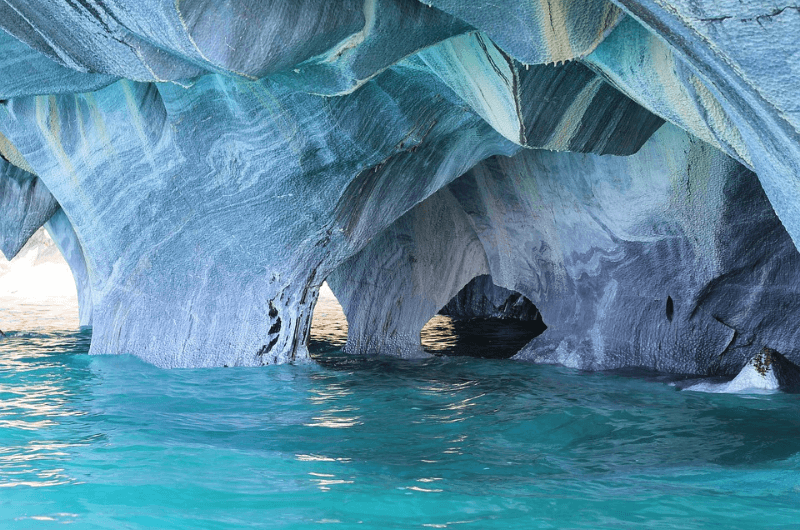
The Marble Chapel as they call it, is a bunch of geological formations near the small town of Puerto Río Tranquilo. And believe me, this is a must-see place. We took a tour and learned, that this marble cave system was formed more than 6 000 years ago, when the waves from the glacier lake eroded the walls of the rock, creating cave ceilings similar to cathedral’s vaults, hence the name. The marble walls alone are impressive, but together with the turquoise water it’s so astonishing, it would make me convert to faith... maybe.
Fun fact: According to Chilean tradition, anyone single who touches the marble walls will get married within a year to the day. I can’t confirm... it’s been less than a year since I was there, and I’m already married. Happily, of course. ?
Tip: Book the tour on site from Bahia Mansa. It’s a few minutes’ drive south from the Puerto Río Tranquilo. The agency has no websites but it’s off the beaten track, so it’s not so crowded and cheaper. The tour last about an hour and the price is around 15 000 CLP (18 USD | 16 EUR). Read about other things you should know before traveling to Chile in a separate article.
Coyhaique National Reserve
Another of many National Parks and Reserves in Chile. One would say it’s getting boring, but the thing is, you never get fed up with Chilean nature. It’s so diverse! In the northern Patagonia you go from mighty glaciers to green pastures in a matter of few hours. The Coyhaique Reserve represents a perfect hiking spot with all the perks of nearby city. We stopped there for 2.5 hours on our way along the Carretera Austral for a leisure circuit hike around the lakes.
Laguna San Rafael National Park
Laguna San Rafael boasts with a title of UNESCO Biosphere Reserve. I love that you can see a part of the Northern Patagonia Icefield from the park, while walking through wetlands and a temperate rainforest. Laguna San Rafael is by the way home to the highest peak of southern Andes’, a 4 058 m (13 314 ft) Monte San Valentín. Unfortunately, I didn’t pack the Time-Turner Necklace, so we had to skip this one, but I intend to stop by on our next visit.
Practical info:
- Laguna San Rafael National Park is a daytrip from Puerto Río Tranquillo.
- Take the 77 km (48 mi) long route X-728 leading to Bahío Exploradores and stop at the Refugio de La Guilas. There are marked trail along the area to explore.
- If you wish to climb up the San Valentín iceberg, book a tour in Puerto Río Tranguillo. It may be dangerous to climb the glacier without a guide and proper gear.
Cerro Castillo National Park
National Park Cerro Castillo offers a number of hiking trails with a view of its crown jewel Cerro Castillo, a 2 675 m (8 776 ft) high three-spikes mountain towering over the laguna of the same name. Too lazy for a hike? No problemo, the town Villa Cerro Castillo lies directly on Carretera Austral, where you can take beautiful pictures of the mountains, grab a lunch and continue on the road.
Transport tip:
By the way, forget about crossing the whole Patagonia by car in one take. There are lakes and glaciers you wouldn’t like to go through in a car, not that they would let you. You would have to take and Argentinian detour and that’s not possible in rented car (rental rules). Far better idea is to buy a combined plane ticket and rent a car in each area. That means, you don’t have to return to the original destination, but fly straight to another. Less complications and more experiences (such as visiting some of the top 10 things to see in the Lake District)! For inspiration check this flight (Santiago de Chile–Puerto Montt–Punta Arenas). One last tip: go for Latam Airlines, Sky is a nuisance.
2. Villarica Ascent
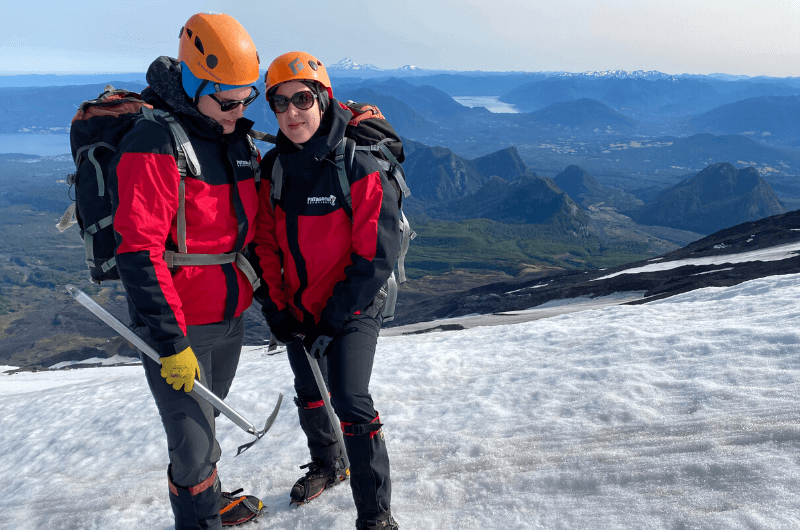
Chile has countless volcanos, but Villarica is the real deal. It's the most active volcano in South America and a very popular tourist destination. That said, it’s no cakewalk. More Vietnam-like experience (especially with the surrounding hills covered in mild jungle). What about the climb, I hear you asking. Well, to be honest it’s thrilling but I almost died there. Imagine ascending from 1 500 m (4 921 ft) to 3 000 m (9 842 ft) with:
- ice axes and crampons, because half of the volcano is covered with snow
- gas mask because all the sulfur fumes close to the top
And all of that within approximately 3 hours. Deadly combination. I didn’t die up there just because the views and the feeling were amazing! I literally felt the warm ground as the lava was close to surface. If you’re lucky you can see the bubbling lava over the edge of the crater. Sometimes the tourists even managed to capture the eruption, as the volcano always spews the lava on the same side, so the expedition is safe and sound.
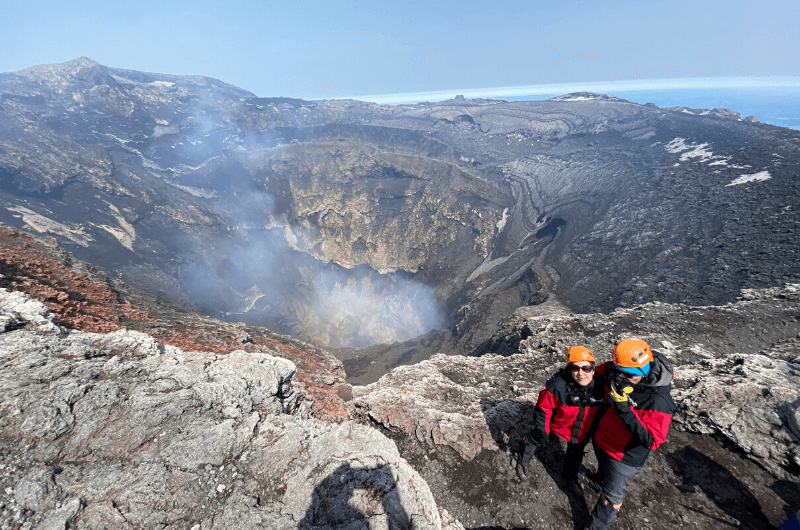
Fun fact: The indigenous indian tribe Mapuche calls the volcano Rucapillán, meaning “the home of the great spirit”. Taking into consideration that Mapuche is the only native tribe which has never surrendered to the colonizers, I believe they know what they’re talking about.
Sad fact: Unfortunately, nowadays they have to fight again over their land and living space, this time against oil and gas companies.
And now the coolest thing! To save ourselves from the descent, we slid down the volcano on plastic sleds. It took us about an hour, and it was super fun. From now on, I think I won’t regard a climb wholesome until I get my sled! To sum up, the ascent to Villarica crater was one of the deadliest, most challenging, most awesome experiences of my life.
Practical info:
- Book a tour guide on site. Not only do you need a permision if you go alone, but it’s also a suicidal mission.
- The Villarica ascent tour costs aroud 225 000 CLP (268 USD | 236 EUR) and that includes a permission, a guide and the complete gear.
- The meet-up was at 7 am in front of the agency and the whole trek took around 7 hours (3-4.5 up and 1.5 hours down).
- After this experience, you’ll need a pretty good place to relax in—pick a hotel and book it through our affiliate link
Speaking of Villarica, it really is no walk in the park. But it's an experience worth having. I've written an article about it that might be useful if you're considering climbing Villarrica.
For those who don’t feel like killing themselves on Villarica:
Huerquehue National Park
Close to Villarica is another NP—Huerquehue. It’s one of the oldest NP in Chile, dating back to 1912. Hidden deep in the Araucaria region, it’s full of forests, alpine lakes and waterfalls and rich with both fauna and flora. One of the special species inhabiting this area is Chilean rose tarantula (Araña Pollito). It’s one of the most skittish and friendly species, which makes it popular as a pet. In fact, most of the US and European pet stores offer this tarantula species. So, don’t get scared when it lands on your back as you walk the park. Try out these hikes:
- Huerquehue National Park Main Trail (moderate, approximately 10 hours)
- Huerquehue Lakes Trail (moderate, approximately 4 hours)
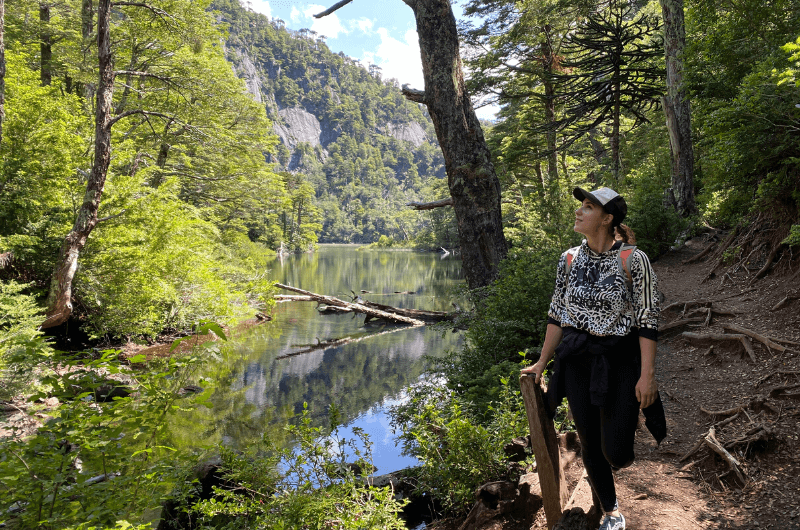
Pucón
Pucón is a city located on the shores of Villarica Lake. We chose it as a base for our expedition to Villarica and surrounding national parks and reserves. It’s one of the most popular vacation destinations for Chilean and foreign tourists altogether. You’ll find an airport, many hotels, cafés, as well as beautiful beaches there.
1. National Park Torres del Paine
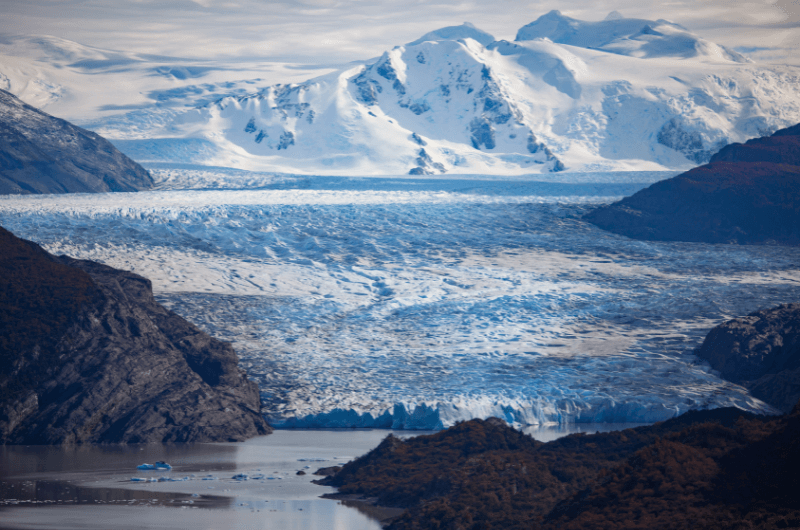
Disclaimer: The run for number one of Patagonia was really tight between Villarica and Torres del Paine. Finally, I decided for Torres del Paine, because not everyone would manage the Villarica ascent.
The living, breathing heart of the Chilean Patagonia is the Torres del Paine National Park. This is the place you must visit in Chile if nothing else. For me personally, this is the most beautiful NP in Chile. And I’m not the only one who thinks so, it was granted UNESCO protection in 1987 as a World Biosphere Reserve and declared the eighth wonder of the world in 2013.
Probably any picture you ever saw about Chile is from Torres del Paine. The massive mountains, turquoise blue mountain lakes, million-years-old glaciers…I’m usually not sentimental but I fell in love with this place. I dare say, it’s on the same level as Yosemite Park. The atmosphere reminds me of Norway fjords, just better. Besides the landscape, you can even spot a mountain lion, the great condor, or cute lama guanaco (that’s the only one from the trio who came to say hello when we were there).
How to get there?
To get to Torres del Paine, you need to arrive at Punta Arenas first. Because it’s a 3 100 km (1 900 mi) trip, I strongly recommend taking a plane on this one. The flight connections are almost as regular as buses and far more comfortable. Be sure to buy a ticket from LATAM airlines (Sky sucks) and avoid the change stress by buying the connected plane ticket (from the Atacama to Santiago to Punta Arenas).
Read the other 5 Things You Need to Know About Torres del Paine in a separate article.
From Punta Arenas, it’s 250 km (155 mi) to Puerto Natales and another 80 km (50 mi) to Torres del Paine NP.
Tip: Download this handy road map and this handy map of the park by the CONAF (National Forest Corporation). It’s only in Spanish, but I trust you with deciphering the icons ?
Entrance fees:
High season (October 1-April 30):
- Adults: 21 000 CLP (25 USD | 22 EUR)
- Children: 6 000 CLP (7 USD | 6.30 EUR)
Low season (May 1-September 30):
- Adults: 11 000 CLP (13 USD | 11.60 EUR)
- Children: 1 000 CLP (1.20 USD | 1 EUR)
This post may contain affiliate links. We earn a small commission if you make bookings through my links, at no additional cost to you. This helps us keep this blog free, thank you!

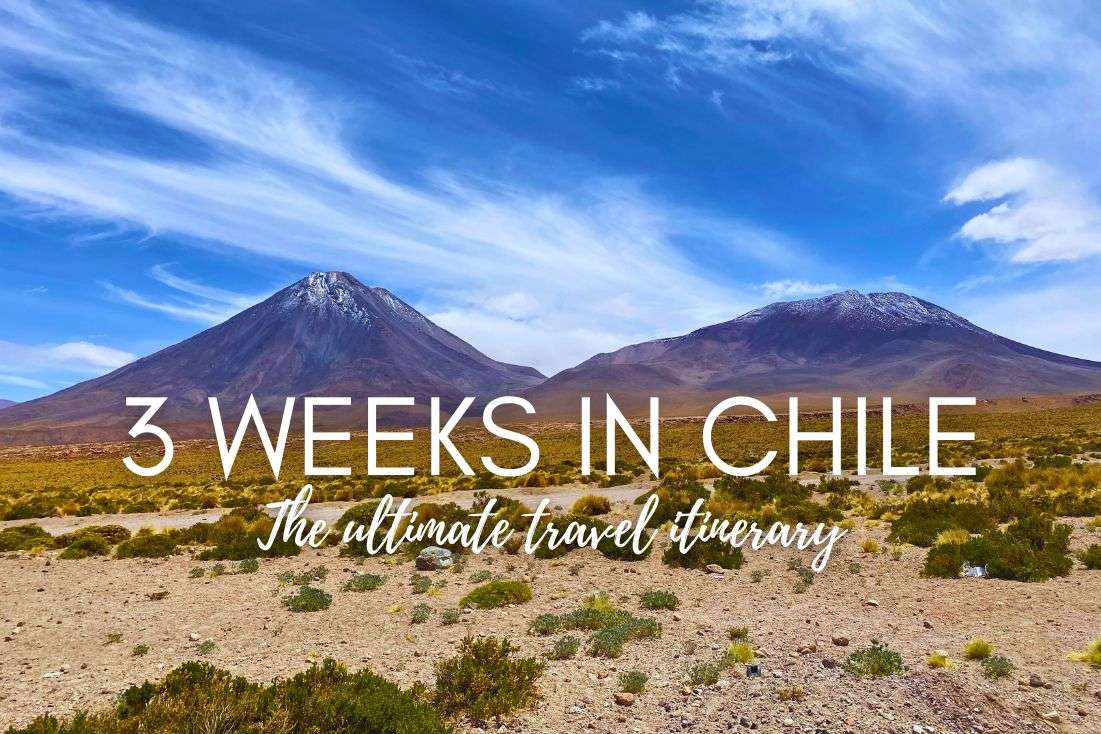





Comments
Thoughts? Give us a shout!